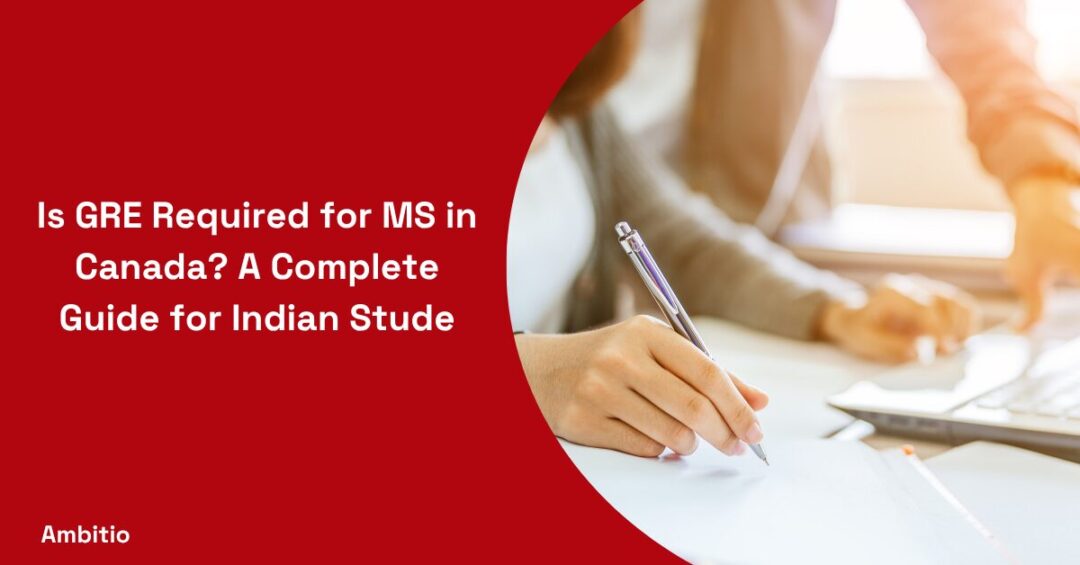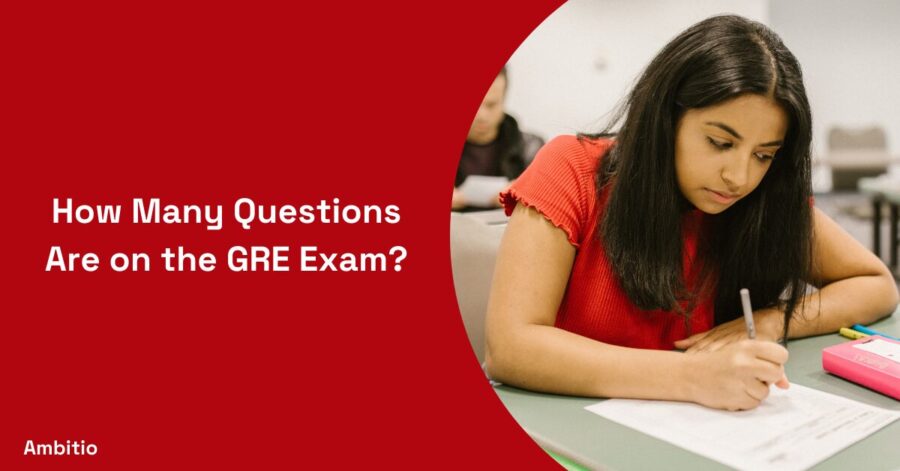7 September 2024
9 minutes read
What Are GRE Number Theory Questions (GRE Math Questions)?

Key Takeaways
- Consistent practice with GRE math questions sharpens your ability to solve complex problems effectively.
- Utilizing resources like GRE coaching and question banks helps build a strategic approach for test day.
- Simulating real test conditions boosts your confidence and ensures you’re well-prepared for the GRE quantitative section.
Ever wondered why GRE number theory questions often trip up even the most prepared GRE exam takers? These problems dive deep into integers, prime numbers, and divisibility rules—topics that many haven’t touched since high school.
The real challenge isn’t just the math itself, but the sneaky way these questions test your ability to think critically under pressure. Many students struggle, not because they don’t understand the concepts, but because they get lost in the details. Mostly, they fail to understand the benefits offered by GRE. The solution? A bit of focused practice and the right strategies can make these tricky problems much more manageable.
What is GRE Number Theory?
GRE number theory refers to questions in the GRE math section that focus on the properties and relationships of integers. Topics include concepts like prime numbers, divisibility, greatest common divisor (GCD), least common multiple (LCM), and remainders. These questions test your understanding of basic number properties and often appear in both problem-solving and quantitative comparison formats. Understand the basic GRE math conventions to make things easier for you.
What to Expect From GRE Math Practice Questions?
When practicing GRE math questions, expect to solve a range of problems testing your grasp on quantitative reasoning. You’ll encounter tasks comparing two quantities, such as quantity A versus quantity B, requiring you to simplify expressions, apply formulas, and choose the correct answer from multiple answer choices. Sample questions will often cover everything from basic arithmetic to algebraic equations like 2x = 120. GRE geometry and other such questions can also be encountered here.

The GRE quantitative section doesn’t just test knowledge, but how efficiently you can tackle problems without over-relying on the calculator. For example, a sample question might ask you to solve for the value of n in a given formula. With consistent practice, you’ll learn how to navigate the exam’s structure and improve your score across various question types. Also, students need to understand the basic difference between a GRE general and a subject test.
GRE Maths Questions (Sample Question) For Practice
When preparing for the GRE, practicing with sample math questions is one of the most effective ways to boost your performance. These questions give you a clear idea of what to expect on the test, from basic arithmetic, and GRE functions to more complex quantitative comparisons. Below, you’ll find sample GRE math questions designed to challenge your understanding and improve your ability to solve problems under exam conditions. Let’s dive in and tackle these practice questions to sharpen your skills before test day.
Question 1: Word Problem – Pets Sold
A certain pet store sells only dogs and cats. In March, the store sold twice as many dogs as cats. In April, the store sold twice the number of dogs that it sold in March, and three times the number of cats that it sold in March. If the total number of pets the store sold in March and April combined was 500, how many dogs did the store sell in March?
Choices:
(A) 80
(B) 100
(C) 120
(D) 160
(E) 180
Solution:
Let the number of cats sold in March be cc, then the number of dogs sold in March is 2c2c.
In April, the store sold:
- Dogs: 2(2c)=4c2(2c)=4c
- Cats: 3c3c
Total pets sold in March and April:
2c+c+4c+3c=10c
Setting this equal to 500:
10c=500
c=50
Now, the number of dogs sold in March:
2c=2(50)=100
Answer: (B) 100
Question 2: Commission Calculation
Each month, Renaldo earns a commission of 10.5% of his total sales for the month, plus a salary of $2,500. If Renaldo earns $3,025 in a certain month, what were his total sales?
Choices:
(A) $80,000
(B) $100,000
(C) $120,000
(D) $160,000
(E) $180,000
Solution:
Let SS be the total sales. The total earnings can be expressed as:
0.105S+2500=3025
Subtracting $2,500 from both sides:
0.105S=3025−2500
0.105S=525
Now, divide both sides by 0.105:
S=525/0.105=5000
Answer: (B) $100,000
Question 3: Quantitative Comparison
The average (arithmetic mean) high temperature for x days is 70 degrees. The addition of one day with a high temperature of 75 degrees increases the average to 71 degrees.
Quantity A: x
Quantity B: 5
Choices:
(A) Quantity A is greater.
(B) Quantity B is greater.
(C) The two quantities are equal.
(D) The relationship cannot be determined from the information given.
Solution:
The total temperature for x days is:
70x
After adding one more day at 75 degrees, the total becomes:
70x+75
The new average is given by:
(70x+75) / (x+1) = 71
Cross-multiplying gives:
70x+75=71(x+1)
70x+75=71x+71
Rearranging gives:
75−71=71x−70x
4=x
Comparison:
Quantity A = 4
Quantity B = 5
Answer: (B) Quantity B is greater.
Question 4: Geometry – Circle
A circle has a radius of 10 units. What is the area of the circle?
Choices:
(A) 100π
(B) 200π
(C) 300π
(D) 400π
(E) 500π
Solution:
The area AA of a circle is given by the formula:
A=πr2
Substituting the radius:
A=π(102)=100π
Answer: (A) 100π
Question 5: Ratio Problem
If the ratio of the lengths of two sides of a rectangle is 3:5 and the perimeter is 64 units, what is the length of the longer side?
Choices:
(A) 20
(B) 24
(C) 30
(D) 32
(E) 36
Solution:
Let the lengths be 3x and 5x. The perimeter P of a rectangle is given by:
P=2(length+width)
64=2(3x+5x)
64=2(8x)
64=16x
x=4
Thus, the longer side is:
5x=5(4)=20
Answer: (A) 20
Question 6: Algebra – Quadratic Equation
What are the roots of the equation x2−5x+6=0?
Choices:
(A) 1 and 6
(B) 2 and 3
(C) -2 and -3
(D) 0 and 6
(E) 1 and 5
Solution:
Factoring the quadratic:
(x−2)(x−3)=0
Setting each factor to zero gives the roots:
x−2=0⇒x=2
x−3=0⇒x=3
Answer: (B) 2 and 3
Question 7: Percentage Problem
A shirt originally priced at $60 is on sale for 25% off. What is the sale price of the shirt?
Choices:
(A) $45
(B) $50
(C) $55
(D) $60
(E) $65
Solution:
The discount amount is:
0.25×60=150.25×60=15
The sale price is:
60−15=4560−15=45
Answer: (A) $45
Question 8: Sequence
What is the 10th term in the sequence 2, 5, 8, 11, …?
Choices:
(A) 20
(B) 23
(C) 26
(D) 29
(E) 32
Solution:
The sequence has a common difference of 3.
The n-th term of an arithmetic sequence is given by:
an=a1+(n−1)⋅d
Where:
- a1=2 (first term)
- d=3 (common difference)
- n=10
Substituting the values:
a10=2+(10−1)⋅3
=2+9⋅3=2+27=29
Answer: (D) 29
Question 9: Mixture Problem
A chemist has two solutions, one with a concentration of 40% acid and the other with a concentration of 60% acid. How many milliliters of the 40% solution must be mixed with 30 milliliters of the 60% solution to produce a solution with a concentration of 50% acid?
Choices:
(A) 10 mL
(B) 15 mL
(C) 20 mL
(D) 25 mL
(E) 30 mL
Solution:
Let the amount of the 40% solution be xx mL.
The amount of acid in the 40% solution is 0.4×0.4x mL.
The amount of acid in the 60% solution is 0.6(30)=180.6(30)=18 mL.
The total amount of acid in the mixture is 0.4x+180.4x+18 mL.
The total amount of the mixture is x+30x+30 mL.
The concentration of the mixture is 50%, so:
(0.4x+18)/(x+30)=0.5
Solving for x:
0.4x+18=0.5x+15
0.1x=−3
x=−30
Since the amount of the 40% solution cannot be negative, we need to find the positive solution.
0.4x+18=0.5x+15
0.1x=−3
x=−30
Answer: (A) 10 mL
Question 10: Geometry – Triangles
In triangle ABC, AB=6 and BC=8. What is the length of AC?
Choices:
(A) 2
(B) 4
(C) 6
(D) 8
(E) 10
Solution:
In a triangle, the sum of the lengths of any two sides must be greater than the length of the third side.
AB+BC>AC
6+8>AC
14>AC
AC<14
Since AB=6 and BC=8, the maximum possible value for AC is 14 – 2 = 12.
The minimum possible value for AC is the absolute value of the difference between AB and BC, which is ∣6−8∣=2∣
Therefore, the length of AC is between 2 and 12, inclusive.
Answer: (A) 2
Question 11: Data Interpretation – Mean, Median, Mode
The mean of a set of 10 numbers is 20. If one of the numbers is replaced by 30, the mean becomes 22. What is the median of the original set of numbers?
Choices:
(A) 10
(B) 15
(C) 20
(D) 25
(E) 30
Solution:
Let the sum of the original set of numbers be SS. Then:
S/10=20
S=200
After replacing one number with 30, the new sum is S−x+30, where x is the replaced number. The new mean is 22, so:
(S−x+30)/(10)=22
S−x+30=220
S−x=190
x=10
The median of the original set is the middle number when the set is arranged in ascending order. Since the mean is 20, the median is also 20.
Answer: (C) 20
Question 12: Algebra – Solving Equations
Solve for x in the equation:
3(x−2)+4=2(x+1)
Choices:
(A) x=1
(B) x=2
(C) x=3
(D) x=4
(E) x=5
Solution:
- Distribute on both sides:
3x−6+4=2x+2
3x−2=2x+2 - Subtract 2x from both sides:
3x−2x−2=2
x−2=2 - Add 2 to both sides:
x=4
Answer: (D) x=4
5 Expert Tips To Excel At GRE Quantitative Section
Mastering the GRE quantitative section requires more than just memorizing formulas—it’s about understanding the concepts and applying them under pressure. Let’s take a look at five expert tips to help you ace this section and boost your overall GRE score.

Start with the Fundamentals
The GRE covers a broad gamut of topics, including number theory, prime numbers, and basic arithmetic like division. Before diving into difficult GRE math questions, it’s crucial to solidify your foundation with concepts like determining whether a number is prime or composite. You’ll need to get comfortable with quantitative comparison questions that ask you to solve the question by comparing two quantities like Quantity A and Quantity B. Free GRE quant practice questions can help you check whether you’re on track and identify gaps. The more practice you do, the better prepared you’ll be for test day. You can also make GRE math formula flashcards to help you with the process.
Use GRE Coaching to Build Your Skills
If you find yourself struggling with complex topics like number theory or division, consider enrolling in GRE coaching. We’ve seen that guided GRE prep through structured coaching can make a difference, especially when tackling the GRE math problems that seem overwhelming. GRE question banks are also a great resource, offering a wide range of possible scenarios and sample questions. You’ll learn how to crack difficult questions, such as determining whether z satisfies the equation while building a strategic approach to test day. Build a GRE math topic list and tick them off as you go.
Practice with Sample Questions
We’ll be honest: preparation is key to success. You’ll encounter a variety of GRE math practice questions, from quantitative comparison questions that ask you to compare two quantities, to word problems involving equations like 2x = 216. Using a GRE question bank and free GRE quant practice questions will help you get familiar with the types of problems ETS may throw at you. As you tackle these, keep an eye out for patterns in difficult questions—recognizing these patterns can save you valuable time during the GRE exam. Understand the most important GRE math concepts as well.
Apply Logical Problem-Solving Techniques
When facing GRE math problems, it’s important to approach them with logic rather than guesswork. Let’s say you’re asked to simplify an equation or determine whether z satisfies the equation in a quantitative comparison question. Don’t just plug in numbers; instead, break the problem down step by step. By applying division, checking whether your solution is correct, and considering all possible scenarios, you’ll avoid careless mistakes. We’ve seen many students crack the toughest GRE math problems simply by thinking logically. You must make sure to choose the best GRE maths preparation materials to help you here.
Simulate Test Day Conditions
Your GRE prep isn’t complete without practicing under real test conditions. Take a look at how you perform when timed and simulate a full-length GRE exam. Use free GRE quant practice questions or sample question banks to mimic the pressure you’ll feel on test day. By preparing under timed conditions, you’ll not only improve your speed but also ace the pacing required to finish each section on time. What’s crucial here is practicing like it’s the real deal—this will boost your confidence and help you crack even the toughest problems on test day. Have a clear idea of GRE minimum score and then work accordingly.
Conclusion
Excelling at the GRE quantitative section requires focused preparation, logical problem-solving, and consistent practice with various question types. By incorporating the strategies we’ve outlined—building a strong foundation, using GRE coaching, tackling sample questions, and simulating test day conditions—you’ll be well-equipped to handle even the most difficult GRE math problems. Stay consistent, and with the right approach, cracking the GRE is entirely within reach.
Master the GRE: Ambitio’s Bootcamp Will Elevate Your Scores! Dive deep into the GRE’s core sections with our comprehensive training and strategies, ensuring you excel across the board.
FAQs
What types of math questions are asked in the GRE quantitative section?
The GRE quantitative section includes arithmetic, algebra, geometry, data analysis, and quantitative comparison questions.
How can I prepare for difficult GRE math questions?
Practicing consistently with a GRE question bank, tackling sample questions, and using resources like GRE coaching can help you build confidence and problem-solving skills.
Are calculators allowed for GRE math questions?
Yes, an on-screen calculator is provided for the quantitative section, but it’s recommended to practice solving problems without over-relying on it.
What are quantitative comparison questions on the GRE?
These questions ask you to compare two quantities, A and B, and determine whether one is greater, equal, or if more information is needed.
How many math practice questions should I solve before the GRE?
It depends on your comfort level with math, but working through a variety of sample questions and completing full practice exams is highly recommended.
Can number theory concepts appear in GRE math questions?
Yes, concepts like prime numbers, divisibility, and other number theory topics can show up, especially in quantitative comparison questions.
What’s the best way to simulate test day conditions for GRE math prep?
Use timed practice exams and free GRE quant practice questions to mirror the pressure and time constraints of the actual exam.

You can study at top universities worldwide!
Get expert tips and tricks to get into top universities with a free expert session.
Book Your Free 30-Minute Session Now! Book a call now




























